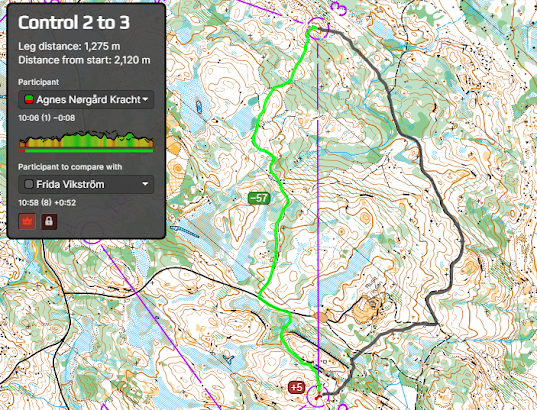Left, Right, or Straight: Leg Analysis #16
We often have to choose from several possible routes on a leg, typically from two.
Sitting at the table, we can use a ruler to determine the route accurately, but we are interested in quick calculations that can be performed under race conditions.
An approximate order of operations for this leg might be as follows:
We make an assessment of the main idea of this leg and a general assessment of the relief. We have a difficult control point (control 3) on a slope. Two possible route choices are immediately obvious, as we need to avoid the big cliff at the start of the leg.
Right route: using the main road with a long approach to the control.
Left route: taking the trail, which has less extension. The approach to the control is also long but seems easier as it goes from above downwards.
Relief assessment: we are descending 50 metres on this leg. The left route has no elevation gain, while the right route leads to a road that goes below the level of control 3. Approaching the control, we will have to climb 10–15 meters. It's not much, but still noticeable.
2: A choice of two route ideas:
We can safely add 30% to the length of the ringt approach, and it will be an equally time-efficient left approach (sections 1L and 1R).
The exits from control 2 are also roughly similar in length and difficulty (sections 2L and 2R).
It remains to be decided which is faster and better for us to execute: Section 3L or Section 3R.
In practice, the results of the leaders on both routes (from those who have uploaded their GPS tracks)







Comments
Post a Comment